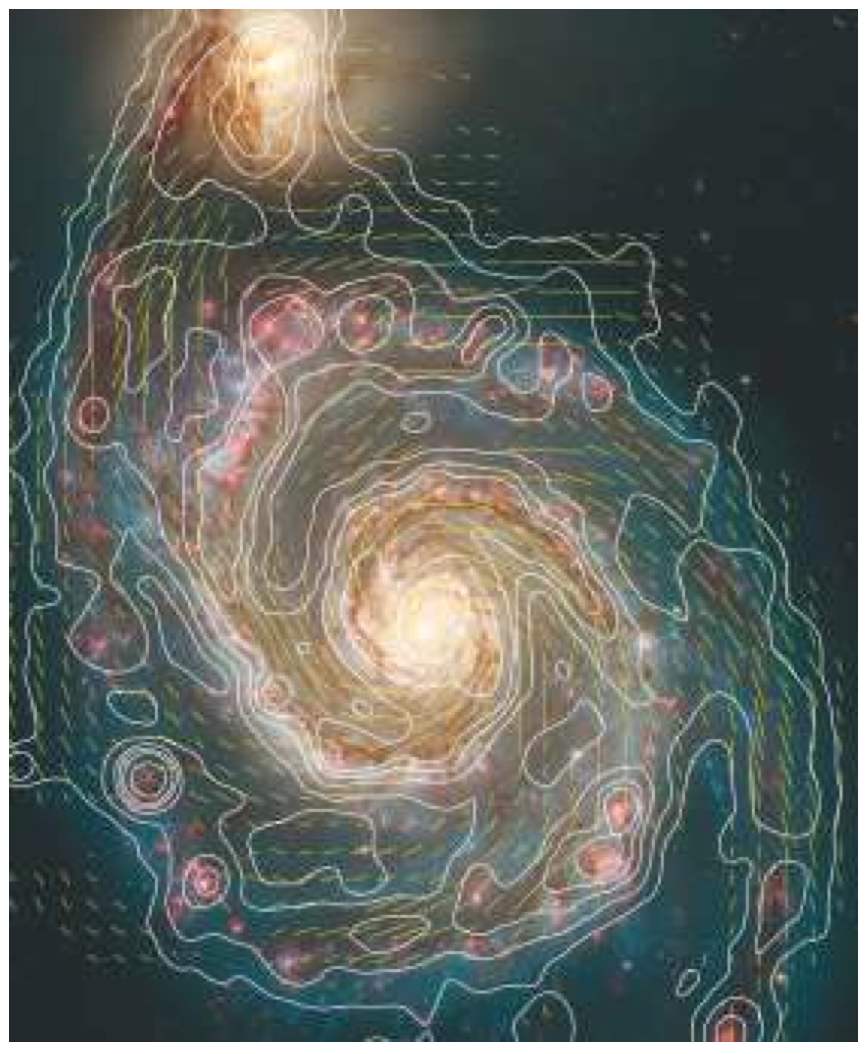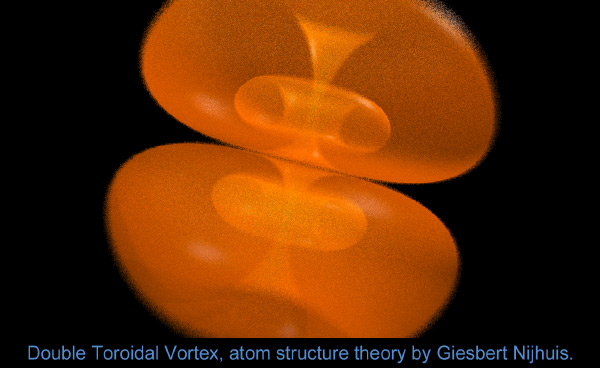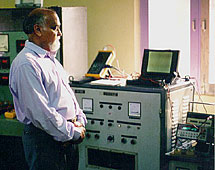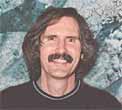What are the underlying causes of gravity and magnetism? For me, this has been a slowly maturing concept. I am sharing my thoughts here and would like to get your feedback. Yes, I am going against much of the "received wisdom" of science. Just take these thoughts as a pointer, an invitation to look at things from a different point of view. Perhaps much of this will be found correct as time passes, but then ... perhaps not.
Terms: I know that there is supposed to be a difference between the two terms gravity and gravitation with the first referring to the earth's gravitational attraction and the second to the phenomenon in general, but here I am using both terms to refer to the phenomenon as such. Spin is generally used to describe the twisting motion inherent in particles, while rotation refers to an accumulation, a mass of particles, for instance a planet, rotating as a whole.
Gravitation, as observed and modeled by mainstream physics, seems to be insufficient to explain the continued existence of galaxies as unitary systems. There just doesn't deem to be enough mass in all those numerous stars to be able to hold them galaxies together by gravitational pull alone. Mainstream scientists resort to such nebulous concepts as "dark matter" to explain there might be a great deal of mass we just can't detect. I do not think that is a good way to approach the problem.
To make any headway in this, we actually need to conceptualise the cause of gravity, something which physicists have been quite reluctant to do ever since the times of Newton, who described gravity, but when asked what the cause was, he recused himself with the words ("hypotheses non fingo") or "I'm not proposing a hypothetical mechanism." We are associating gravity with mass, but we have no conceptual understanding why masses "gravitate" towards each other. There are theories all right, and there is much discussion, but we have no agreed way of modeling the cause of gravity.
Perhaps Einstein came closest to describing a mechanism when he said that gravity is a distortion of space-time, he called it 'space-time' curvature...

There is a very common illustration of a ball pulling a flat sheet out of shape to represent Einstein's curvature of space but that depiction of the concept is not really accurate. We do not live in a two-dimensional world of sheets of flat space-time and gravity isn't just a bending, but a twisting curvature. Imagine the ball rotating and thus distorting that matrix of space to create a vortex in the space matrix, and you'd have a good analogy.
We should really think of space as a 3-dimensional matrix filled with "potential" particles. That matrix seeks to arrange itself in orthogonal patterns, but it can also be slightly twisted out of shape by a rotating mass sitting inside that spatial matrix. The distortion would be a twist, a vortex form, in the space matrix.
Gravitation is a consequence of spin-induced curvature of the matrix of space
I am postulating that gravitation is in essence a consequence of rotation or 'spin'. The spin of particles causes gravity, and the effect is additive, meaning the more particles are in a mass, the stronger the common gravitational field. The rotation of macroscopic accumulations of matter - planets, stars, black holes and galaxies also causes gravity. Both twist (distort) 3-d space and so induce a vortex-shaped region of stress that spreads far and almost instantly, due to the rigidity of the space matrix. Two or more of those stressed regions of space have attraction for each other. The space matrix strives to unstress. It can't unstress by itself, as the rotating mass keeps distortion constant. But it could find some stress relief by bringing two particles that have a stressed field closer to each other. So gravitationally stressed areas of space have a definite affinity for each other, they attract, in an effort to relieve stress.
Distortion of space takes the form of an extended vortex, eventually folding in on itself, creating a spherical field. The distortion of space itself does not need to propagate like radiation does, it adapts almost instantly to changes. Remove the source of distortion and the field collapses. All of the distorted space snaps back to normal. The effect of gravity is thus not limited by the speed of light, it has quasi-instantaneous long distance effects. I could imagine applications in advanced, superluminal communications if we learn to modulate gravity like we do radio waves today.
There is some controversy about the speed of gravity, but Newton's celestial mechanics work and they work only when gravity is assumed to be a force that acts instantaneously (or nearly so) at great distances. The Speed of Gravity...
Macroscopic rotation of particle accumulations is additive to the effect of quantum or particle-spin induced gravity. We thus have a doubling of the force in the sense that the effects of particle spin and macroscopic rotation are separate and additive. The twisting of space-time by the rotation of a star or planet combines with the effect of the rotation (spin) inherent in the mass of the individual particles that constitute it.
This gives rise to to a prediction: A non-rotating body of mass should be found to have a smaller overall gravitational effect compared with a rotating body of the same composition.
Actually, Prof. Eric Laithwaite was experimenting with spinning masses in the 1950s and he found definite changes in their gravitational properties when spinning at high rates. Here is a video showing how a heavy mass can be "insulated" against normal gravity, it can kind of "go its own way" just because it is spinning at a high rate. The demonstration in the video is quite instructive.
You can find more videos on Laithwaite's experiments with gyroscopes that exhibit anomalous gravitational properties.
https://www.youtube.com/watch?v=MHlAJ7vySC8
https://www.youtube.com/watch?v=1eQp4grGdqY
Unfortunately, the scientific establishment of his time was so embarrassed to not be able to explain those anomalies that they simply resolved to cut Laithwaite (who is the inventor of maglev trains) off from all collaboration and funding. The facts were suppressed and the experimenter ostracised.
The strength of the gravitational force is determined by two parameters: The amount of mass involved, and the rotational speed or angular momentum of the mass rotating in space-time.
Magnetism
Magnetism also involves spin, and it would seem to be a close cousin of gravitation. However in contrast to gravitation, magnetism appears to have the dynamic characteristics of an energy flow, rather than those of 'attraction by affinity' of an essentially static distortion of space-time. Magnetism is a much stronger force than gravity, but its effects are felt over a very much shorter distance. Perhaps the strong and weak force observed in particle interactions are the particles' magnetic and gravitational field effects.
Electric Universe proponents hold that the cosmos is permeated by electromagnetic currents that link the heavenly bodies in a constant dance of energy exchange. What they say makes sense, but in my view something important is missing. Each and every rotating mass, from planets to stars to galaxies actually creates both gravity and magnetism as a consequence of its rotation, giving rise to not only gravitational but also electromagnetic effects.
Magnetic fields have been shown to be present in space and they follow the spiral patterns of galactic vortices. This illustration is from a paper titled Magnetic Fields in Galaxies.

Spiral galaxy M51. Total radio intensity (contours) and B-vectors at 4.86 GHz (6.2 cm), combined from observations with the VLA and Effelsberg 100-m telescopes (Fletcher et al. 2011). The background optical image is from the HST (Hubble Heritage Team). Graphics: Sterne und Weltraum
Ferromagnetism or "permanent magnetism", is a special case. Some materials - iron is the most well known - can set up permanent magnetic fields by the configuration and alignment of the material's internal 'domains'. The alignment of magnetic domains comes about when ferromagnetic material is exposed to a strong magnetic field while still in a plastic state. The alignment of those domains will then set up a vortex-shaped path which encourages magnetic currents to flow. Those currents - also described as magnetic field lines - are twisting flows of space energy. They exhibit mutual attraction and repulsion, depending on polarity.
In recent times, permanent magnets have been combined in novel ways to create and maintain imbalance of their respective attractive and repulsive forces, while transforming the energy of the magnetic flow into kinetic, rotational energy. An example of this is Yildiz' permanent magnet motor as demonstrated in the following video at the University of Delft in the Netherlands.
It appears that groups of rotating magnets, such as the 1200 permanent magnets contained in Yildiz' magnetic motor, or the magnetic rollers John Searl employed in his early generators, may set up their own secondary and more powerful magnetic field with effects which are different from the combined effects of the stationary magnets. Much like the rotation of a star or planet would increase the gravitational effect, the rotation of groups of magnets appears to weave a more intense field of magnetic interaction. Ionisation and anti-gravity are among the effects that have been reported by some experimenters.
Vortices and Toroids
We see vortex shapes everywhere in nature. They are obvious in galaxies and black holes, but are present in many everyday phenomena. Hurricanes and tornadoes are vortical air flows, sea shells follow vortical growth patterns. The shape and flow pattern is ubiquitous throughout the universe.
Any source of rotation induces a space-time vortex. It is the vortex that twists the space-time matrix out of shape and that twisting in turn causes both the gravitational and the magnetic effect.
Giesbert Nijhuis has theorised the shape of elemental particles to be a Double Toroidal Vortex and he has produced animations showing the principle. I believe he may be very close...

See Giesbert Nijhuis' animations here
Notice that Nijhuis' double toroidal vortex approaches a spherical shape, one we see in particles as well as in planets and stars...
The Primer Fields
Primer Fields, as I understand the theory gives us a very similar perspective. David LaPont posits that every particle, every planet, every star and even galaxies are the result of the action of two opposing bowl-shaped magnetic fields.
In a series of videos, David LaPoint describes how two opposed bowl shaped magnets can actually cause a rotating plasma to manifest, when exposed to strong DC electric current in a vacuum chamber. The resulting magnetic field is a structured entity. It arranges particles into regular polygonal structures. The configuration of the magnetic fields explains how particles may join to form elements of matter. It also provides close match parallels for the visible structure of the galaxies we see in space.
In this first video, LaPoint describes in detail how the magnetic fields in his experiments are configured and how they act to order matter particles. He also proposes a mechanism for the magnetic ejection of matter along the plasma's axis of rotation.
The second video explains Super nova remnants in terms of the magnetic fields involved. Far from being remnants though...
Continue reading "Spin and rotation in gravity, magnetism and star formation" »








 According to Tewari, the universe is filled with an incompressible super fluid. Fundamental particles are vortices that create a tiny spherical void, where circulation at the limiting velocity of light leads to a breakdown of the fluid's integrity. The discontinuity at the void/liquid interface defines the particle boundary. Tension in the external fluid created by the central void gives rise to gravity, while the tangential circulation of the fluid at the interface is the cause of electric field phenomena.
According to Tewari, the universe is filled with an incompressible super fluid. Fundamental particles are vortices that create a tiny spherical void, where circulation at the limiting velocity of light leads to a breakdown of the fluid's integrity. The discontinuity at the void/liquid interface defines the particle boundary. Tension in the external fluid created by the central void gives rise to gravity, while the tangential circulation of the fluid at the interface is the cause of electric field phenomena.